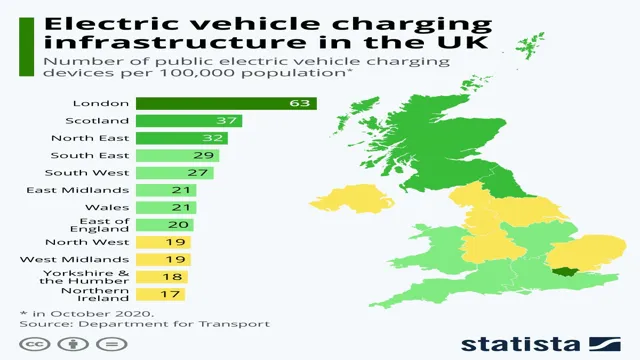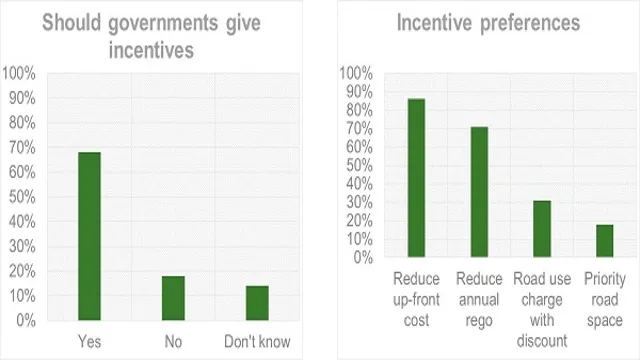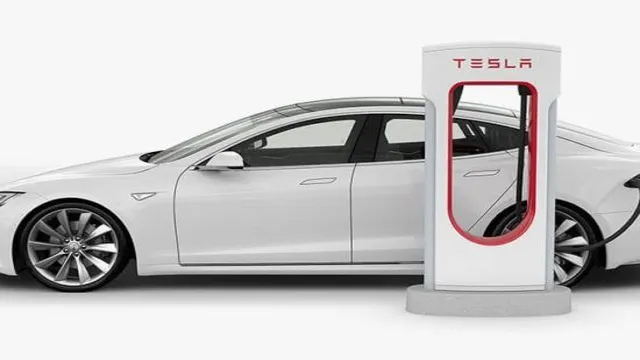Power Up Your Ride: The Future of Electric Car Charging Infrastructure
Electric cars have become increasingly popular in recent years, with a growing number of people seeking an eco-friendly and sustainable transportation option. However, one of the main concerns of electric car owners is access to charging infrastructure. The state of electric car infrastructure has been a topic of debate, with some arguing that it is inadequate while others claim that it is sufficient.
But what is the reality? Are there enough charging stations to support the increasing number of electric cars on the road? And what is being done to improve the situation? Let’s delve into the current state of electric car infrastructure and find out.
Current Availability of Charging Stations
Electric car charging infrastructure has made significant progress in recent years, providing a more accessible charging experience for electric vehicle (EV) owners. With government initiatives and private investments, more charging stations are being installed across different areas, making it easier for drivers to find charging points. The availability of charging stations today is such that major cities have public charging networks that provide quick top-up options for drivers on the go.
Beyond urban centers, many businesses, shopping centers, and public events also have charging stations for free and pay-per-use usage. However, despite the progress, there is still a long way to go to meet the increasing demand for EV charging. The need for charging infrastructure will continue to grow with the increasing number of EVs on the road.
National and Regional Numbers
The current availability of charging stations for electric vehicles (EVs) varies greatly depending on the location. In the United States, the number of charging stations has been steadily increasing. As of 2021, there are approximately 100,000 public charging stations across the country.
California leads the way in terms of the number of stations, with over 30,000 available. Other states with high numbers of charging stations include Texas, Florida, New York, and Washington. However, in more rural areas, the availability of charging stations may be limited.
The government has been working to improve access to charging stations by increasing funding for EV infrastructure and offering incentives for businesses to install them. Overall, as the popularity of EVs continues to rise, so too will the number of charging stations available.

Typical Charging Station Locations
Charging stations are becoming more and more available as electric vehicles become increasingly popular. They can typically be found in public areas such as parking lots, gas stations, shopping centers, and other areas with a high volume of foot traffic. With the growing demand for EVs, new charging stations are frequently being added as cities and businesses recognize the importance of supporting sustainable transportation.
Additionally, some employers are installing charging stations in their parking lots to encourage EV ownership among their employees. As the infrastructure for electric vehicles continues to expand, drivers can expect to see more charging stations in a variety of locations.
The Need for Rapid Charging Infrastructure
Electric car charging infrastructure is a significant factor in the transition to sustainable transportation. As more people switch to electric vehicles, the demand for charging stations increases. Rapid charging infrastructure is crucial in this transition as it enables quick and easy charging for EVs, ensuring drivers don’t have to worry about running out of power on a long journey.
Essentially, rapid charging stations provide electricity at a much faster rate than conventional charging stations, allowing EV owners to charge their vehicles in a fraction of the time. This infrastructure is critical for promoting EV adoption, as drivers need to feel confident that they can quickly recharge their vehicles when they need to. Governments and private companies are investing heavily in developing this infrastructure, with many new projects in the pipeline.
With rapid charging infrastructure, electric vehicles are seen as a more practical and viable option for everyday use, making them an increasingly popular choice among drivers.
Benefits of Rapid Charging
Rapid Charging infrastructure is more important than ever, as electric vehicles become increasingly prevalent. One of the biggest benefits of rapid charging is the time it takes to charge up. Traditionally, charging an electric vehicle can take hours upon hours, but with rapid charging, it can be done in just a fraction of that time.
This means that people can refuel their cars quickly and not have to worry about being stuck with a low battery for too long. It’s like having a gas station on every corner, only much more environmentally friendly. Plus, as electric vehicle batteries continue to improve, the need for rapid charging will only increase.
Without a robust charging infrastructure in place, EV adoption will be stifled, and we will continue to rely on fossil fuels for transportation.
Projected Growth in Electric Vehicles
As the electric vehicle (EV) market continues to grow, there is a pressing need for more and better rapid charging infrastructure. With projected growth in EV sales expected to reach record highs in the coming years, the current charging infrastructure is simply not adequate to support the rising number of EVs on the road. The charging infrastructure needs to be upgraded to cope with the increasing demand of EV owners who need quick and efficient charging.
The importance of a robust and reliable charging network cannot be overstated, as it is the backbone of the EV industry’s growth and success. Just like how gas stations are widespread and easy to find throughout our cities and highways, EV charging stations must become just as prevalent, convenient, and effortless to locate. Without the necessary infrastructure in place, the growth of EVs will be hindered, and the transition to more sustainable, environmentally friendly transportation will be delayed.
The Role of Government and Business
The need for rapid charging infrastructure has become increasingly important in our modern society. The role of both government and businesses must come into play to ensure that we have the necessary infrastructure to support electric vehicles. Governments must provide financial incentives to businesses to build charging stations and electrical grids that can handle the demand.
Businesses, in turn, must play their part by investing in research and development to create more efficient and faster charging technology. Without the proper infrastructure, people may be unwilling to make the switch to electric vehicles, despite their numerous benefits. It’s like having a car without a gas station nearby – it just doesn’t make sense.
The rapid charging infrastructure is the backbone of the electric vehicle revolution, and it’s vital for both government and businesses to work together to ensure its success.
Investing in Electrical Infrastructure
Investing in electric car charging infrastructure is becoming increasingly important as more people make the switch to electric vehicles. Without a robust charging network, EV drivers could be left stranded on the side of the road with a dead battery. This is why governments and private companies are ramping up investment in electrical infrastructure.
Electric utilities are playing a critical role in this effort, as they have the expertise to build, operate, and maintain a reliable charging network. By investing in electric car charging infrastructure, we can help create a more sustainable future and ensure that EV drivers have the peace of mind they need to hit the road. Whether you’re a government, utility, or private investor, investing in electric car charging infrastructure is a smart move for both the environment and the economy.
Costs and ROI
Investing in electrical infrastructure can be an expensive undertaking, but one which can provide a significant return on investment (ROI) in the long term. Upgrading and modernizing electrical systems can improve energy efficiency and reduce operating costs, which over time can translate into substantial savings. However, it’s important to consider all the costs associated with investing in electrical infrastructure, including installation, maintenance, and any potential disruptions to operations during installation.
Conducting a thorough cost-benefit analysis can help determine whether investing in electrical infrastructure is the right decision for your business. Additionally, it’s important to consider the potential ROI, which may come in the form of reduced energy costs, improved equipment performance, and increased employee productivity. Ultimately, investing in high-quality electrical infrastructure can provide long-term benefits that can help businesses remain competitive and achieve their goals.
Types of Charging Stations
When it comes to investing in electrical infrastructure, there are various types of charging stations to choose from. Level 1 charging stations are the simplest and slowest charging option, typically using a standard household outlet to deliver up to 4 kW of power.
Level 2 charging stations, on the other hand, use a dedicated 240V circuit to provide up to 6 kW of power, allowing for faster charging times. DC fast charging stations are the quickest charging option of them all, delivering up to 800V of power and charging a vehicle’s battery up to 80% in just 30 minutes.
Choosing the right charging station for your needs depends on factors such as the type of electric vehicle you own, your charging requirements, and your budget. By investing in the right charging infrastructure, you can help reduce range anxiety and make it more convenient for EV drivers to travel further without worrying about running out of battery power.
Conclusion: A Brighter Future for Electric Cars
In conclusion, electric car charging infrastructure is the backbone of the electric vehicle revolution. It’s what keeps the wheels turning (quite literally) and allows drivers to journey with ease while saving the environment. So next time you see an EV charging station, remember that it’s not just a bunch of fancy cords and plugs – it’s a symbol of progress and a step towards a greener future.
Plus, it’s pretty cool that we can now power up our cars in the same way we charge our phones. Who knew that we’d be living in a world where both our phone and our car are electric? The future truly is electric!”
FAQs
What is electric car charging infrastructure?
Electric car charging infrastructure refers to the network of charging stations and equipment that are essential for charging electric vehicles.
How important is electric car charging infrastructure?
Electric car charging infrastructure is crucial for the widespread adoption of electric vehicles, as it ensures that EV owners have access to a reliable and convenient charging network.
What types of charging stations are available for electric cars?
There are three main types of charging stations: Level 1 (120-volt), Level 2 (240-volt), and Level 3 (DC Fast Charging) stations. Level 1 and 2 stations are commonly found in homes and public locations, while Level 3 stations are typically used for commercial and fleet applications.
How can I find electric car charging stations near me?
There are several online tools and mobile apps that can help you locate electric car charging stations in your area. These include PlugShare, ChargePoint, and EVgo, among others.






